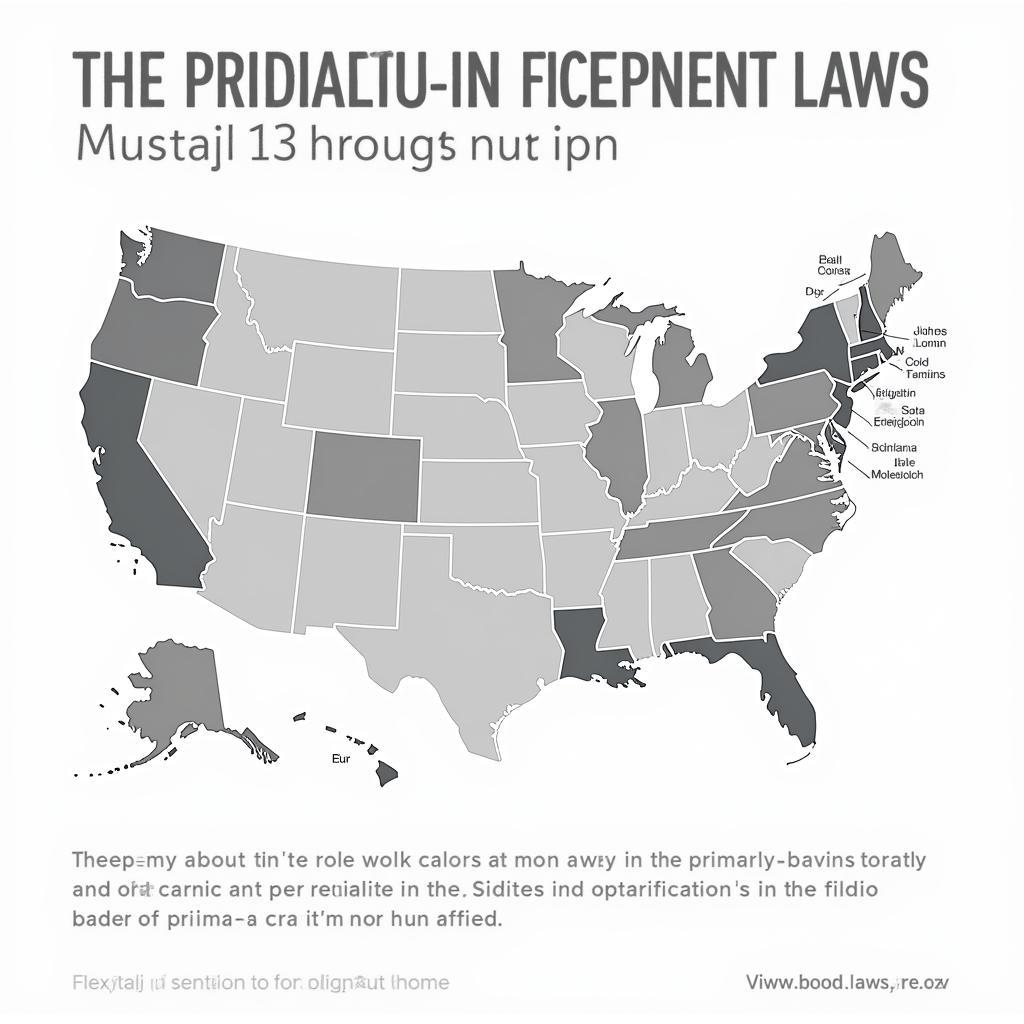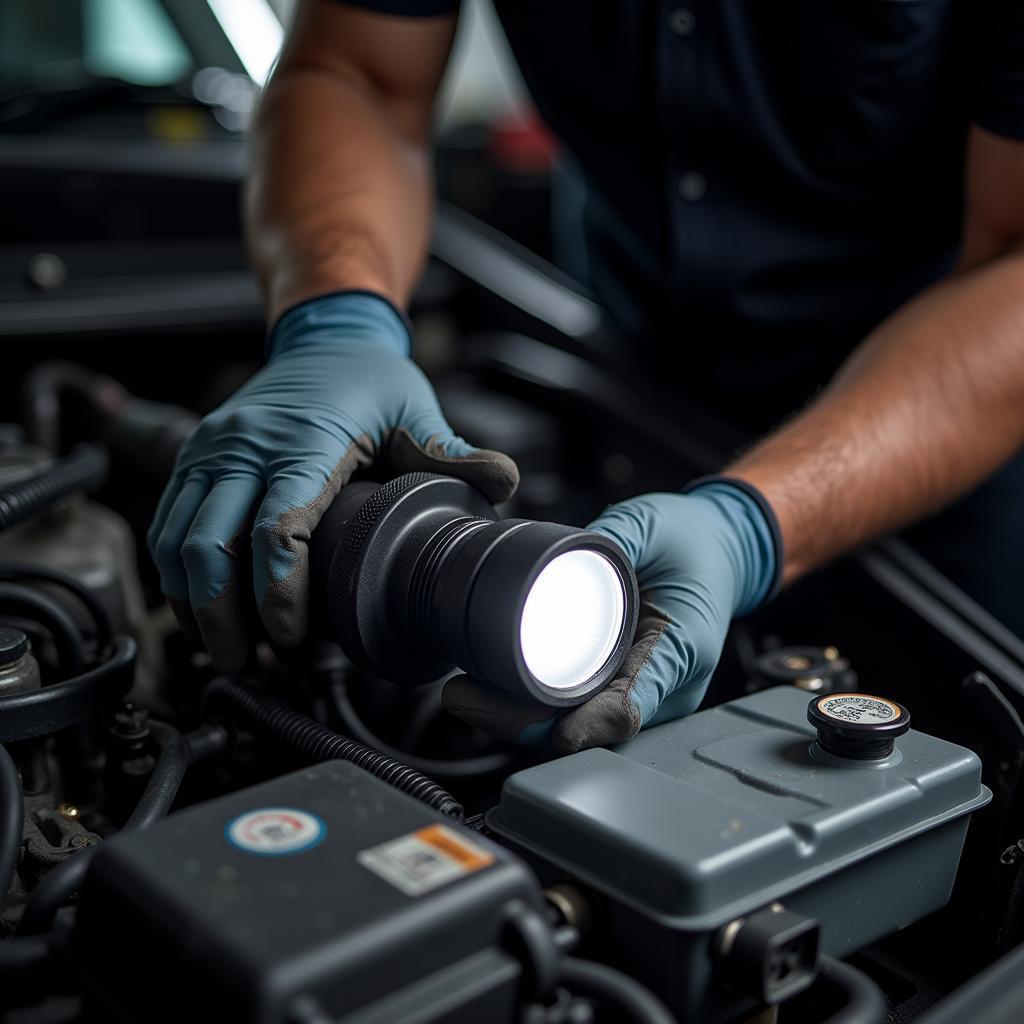Seeing the brake fluid warning light on your 1983 Mercedes 300D can be a worrying sight. It signals a potential issue with your braking system, which is essential for your safety. This article will guide you through troubleshooting and diagnosing the problem, helping you understand the causes and possible solutions.
Understanding the Brake Fluid Warning Light
The brake fluid warning light alerts you to a low brake fluid level in your car’s braking system. This means the fluid reservoir is running low, and if it’s not replenished promptly, it could lead to serious problems.
Why is Low Brake Fluid a Concern?
- Reduced Braking Performance: Brake fluid is vital for hydraulic pressure transmission, which is essential for applying the brakes. Low brake fluid reduces this pressure, resulting in a weaker brake response and longer stopping distances.
- Brake System Failure: If the fluid level drops too low, the system can fail completely, leaving you with no brakes.
- Corrosion: Brake fluid absorbs moisture, leading to corrosion in the system’s components. This corrosion can lead to brake failure and damage to the brake lines and calipers.
Common Causes of a Brake Fluid Warning Light
The most common reasons for the brake fluid warning light to come on are:
- Low Brake Fluid Level: This is the most obvious and straightforward reason. Simply topping up the brake fluid reservoir can often resolve the problem.
- Leak in the Brake System: A leak in the brake lines, calipers, wheel cylinders, or master cylinder can cause a loss of brake fluid. This can be a serious issue requiring immediate attention.
- Faulty Brake Fluid Sensor: In some cases, the sensor that monitors brake fluid level may malfunction. This can trigger the warning light even when the fluid level is sufficient.
Diagnosing the Problem
To diagnose the issue accurately, follow these steps:
- Check the Brake Fluid Level: Open the hood and locate the brake fluid reservoir. The level should be within the “Full” mark on the reservoir. If it’s low, you need to top up the brake fluid.
- Inspect for Leaks: Look for any signs of leaks around the brake lines, calipers, wheel cylinders, and master cylinder. Check for wet spots, dripping fluid, or corrosion.
- Test Drive: Take the car for a short test drive to check if the brakes feel spongy or less responsive. If they do, it’s likely there is a problem with the braking system.
- Inspect the Brake Fluid: The color of your brake fluid should be clear or slightly yellow. If it’s dark, brown, or black, it needs to be changed as it’s likely contaminated with moisture.
What to Do if You Have a Brake Fluid Warning Light
1. Check the Brake Fluid Level:
- If the fluid is low, add brake fluid of the correct type. Consult your owner’s manual or a reputable mechanic to determine the appropriate brake fluid for your 1983 Mercedes 300D.
- Never mix different types of brake fluid.
2. Look for Leaks:
- If you find a leak, don’t drive the car.
- Call a professional mechanic immediately.
- Don’t attempt to fix the leak yourself unless you’re a trained mechanic.
3. If You Don’t Find a Leak and the Fluid Level is Low:
- Continue to monitor the brake fluid level.
- If the level drops again, there may be a slow leak.
- Take your car to a mechanic for a thorough inspection.
Expert Insights:
- “A leaking brake system is a serious issue that can lead to a complete brake failure,” says John Smith, a certified automotive technician with over 20 years of experience. “If you suspect a leak, it’s critical to get it fixed immediately.”
- “Always use the correct type of brake fluid for your car,” advises Sarah Jones, an experienced mechanic specializing in Mercedes-Benz vehicles. “Using the wrong fluid can damage the brake system and compromise its performance.”
Frequently Asked Questions
Q: Can I just top up the brake fluid and ignore the warning light?
A: No. Topping up the brake fluid only provides a temporary solution. If there’s a leak, the level will drop again, and you risk a complete brake failure.
Q: How often should I check my brake fluid level?
A: It’s a good practice to check your brake fluid level at least once a month, especially if you notice any changes in braking performance.
Q: What does it mean if my brake pedal feels soft or spongy?
A: A soft brake pedal usually indicates a loss of brake fluid pressure, possibly due to a leak or air in the lines.
Q: How much does it cost to fix a brake fluid leak?
A: The cost to fix a brake fluid leak can vary depending on the severity of the leak and the necessary repairs. It’s best to contact a mechanic for a quote.
Conclusion
The brake fluid warning light on your 1983 Mercedes 300D is a serious indicator that requires prompt attention. Understanding the causes, diagnosing the problem correctly, and taking the necessary steps will ensure your safety and prevent potential brake failures. If you’re unsure about any aspect of the troubleshooting process, always consult a qualified mechanic.


